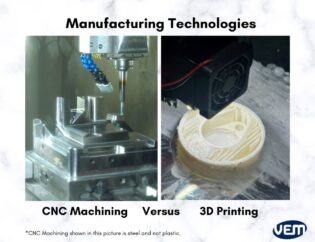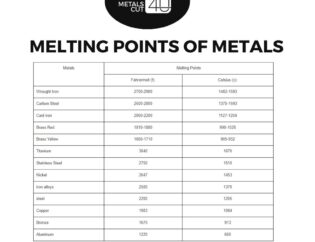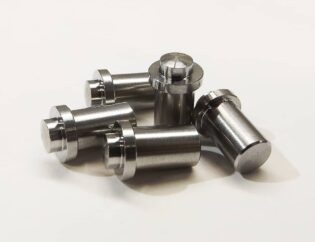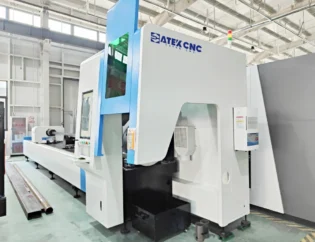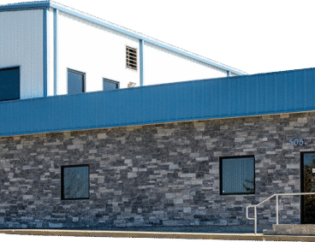Injection moulding is a pivotal manufacturing process that transforms plastic into intricate parts used across various industries. This guide delves into the nuances of injection moulding, emphasizing its significance in producing high-quality, cost-effective components. Readers will gain insights into the mechanics of the process, material selection, and design considerations, equipping them with the knowledge to optimize production and enhance product performance.
As industries increasingly rely on plastic components, understanding injection moulding becomes essential for engineers, designers, and manufacturers. This guide will explore the latest advancements in technology, best practices, and common challenges faced during production. By the end, readers will be well-versed in the intricacies of injection moulding, enabling them to make informed decisions that drive efficiency and innovation in their projects.
Injection Molding: A Comprehensive Guide to Designing Plastic Parts
Injection molding is a manufacturing process that involves filling a metal mold cavity with liquid plastic resin, which then cools and solidifies to form a plastic part. This method is widely used for producing plastic parts at scale due to its efficiency, low material waste, and cost-effectiveness. Industries such as medical devices, consumer products, and automotive heavily rely on injection molding for their production needs. In this guide, we will explore the technical features, types, and best practices for designing plastic parts through injection molding.
Technical Features of Injection Molding
Understanding the technical features of injection molding is crucial for optimizing the design and production process. Below is a comparison table highlighting key technical features:
| Feature | Description | Importance |
|---|---|---|
| Material Selection | Various thermoplastics and thermosets are used, including ABS, Nylon, and Polycarbonate. | Affects part strength, flexibility, and overall performance. |
| Wall Thickness | Recommended thickness varies by material, typically between 0.020 to 0.500 inches. | Ensures structural integrity and minimizes defects like warping and sink. |
| Draft Angles | A minimum of 1 degree is recommended to facilitate part ejection. | Reduces friction and prevents damage during ejection. |
| Cooling System | Channels circulate cooling media (water or oil) to control mold temperature. | Essential for maintaining cycle times and part quality. |
| Ejector Pins | Pins push the molded part out of the cavity after cooling. | Critical for ensuring smooth ejection and preventing part damage. |
| Gating System | Various gate types (tab, sub, hot tip) control the flow of resin into the mold. | Influences fill patterns and cosmetic quality of the part. |
Types of Injection Molding
Injection molding can be categorized into several types, each suited for specific applications and materials. Below is a comparison table of different types of injection molding:
| Type | Description | Best Suited For |
|---|---|---|
| Standard Injection Molding | The most common method, using a single mold to produce parts. | High-volume production of simple parts. |
| Overmolding | Involves molding a second material over an existing part. | Creating multi-material components for enhanced functionality. |
| Insert Molding | Inserts (metal or plastic) are placed in the mold before injection. | Parts requiring additional strength or features. |
| Gas-Assisted Injection Molding | Uses gas to create hollow sections in parts, reducing weight. | Lightweight parts with complex geometries. |
| Liquid Silicone Rubber (LSR) Molding | Uses silicone materials for flexible parts. | Medical devices and consumer products requiring flexibility. |
Best Practices for Designing Injection Molded Parts
When designing parts for injection molding, several best practices should be followed to ensure manufacturability and quality:
-
Optimize Wall Thickness: Maintain uniform wall thickness to avoid sink marks and warping. Use the recommended thickness guidelines for different materials.
-
Incorporate Draft Angles: Apply appropriate draft angles to all vertical surfaces to facilitate easy ejection from the mold.
-
Use Rounding: Incorporate radii at corners to enhance material flow and reduce stress concentrations.
-
Design for Ejection: Ensure that the design allows for effective ejection, using ejector pins strategically placed to minimize visible marks.
-
Select Appropriate Gates: Choose the right gating system based on the part’s geometry and cosmetic requirements to ensure optimal filling and minimal vestige.
-
Consider Cooling: Design cooling channels effectively to maintain consistent temperatures and reduce cycle times.
-
Utilize Simulation Tools: Use simulation software to analyze the moldability of the design and identify potential issues before production.
Conclusion
Injection molding is a versatile and efficient manufacturing process that plays a crucial role in producing high-quality plastic parts. By understanding the technical features and types of injection molding, as well as following best practices in design, manufacturers can optimize their production processes. Companies like Protolabs (www.protolabs.com) and Plastic Parts, Inc. offer valuable resources and services to assist in the injection molding process, ensuring that projects are completed on time and to specification.
FAQs
1. What materials are commonly used in injection molding?
Injection molding typically uses thermoplastics like ABS, Nylon, and Polycarbonate, as well as thermosets like silicone.
2. How does wall thickness affect injection molded parts?
Wall thickness impacts the part’s strength, weight, and cosmetic appearance. Uniform thickness helps prevent defects like warping and sink marks.
3. What is the purpose of draft angles in injection molding?
Draft angles reduce friction during ejection, making it easier to remove the part from the mold without damage.
4. Can complex designs be molded using injection molding?
Yes, injection molding can accommodate complex designs, especially with techniques like insert molding and gas-assisted molding.
5. How can I ensure the quality of my injection molded parts?
Utilizing design best practices, selecting appropriate materials, and working with experienced manufacturers like Wayken RM (waykenrm.com) can help ensure high-quality results.

